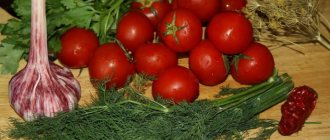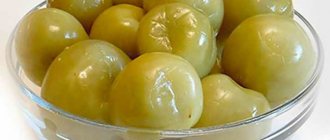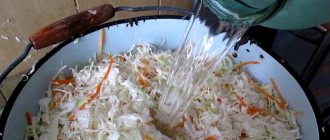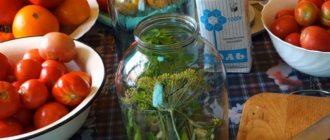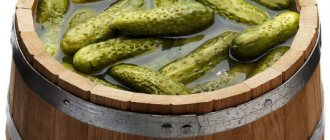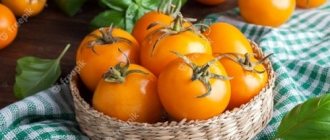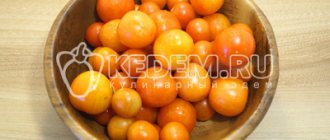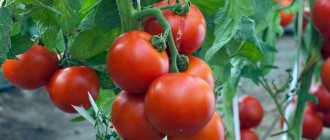Various snacks are prepared from tomatoes, but salted vegetables are the most popular. It is the salting that gives them an unusual and piquant taste, and it is different at each stage of salting.
Thanks to the fermentation process, at the initial stage the tomatoes become lightly salted, then spicy with a pronounced taste, and at the very end of cooking - rich and vigorous. This versatile appetizer goes well with meat, poultry, fish and any side dish.
How to cook delicious salted tomatoes in a bucket - our selection of recipes.
Cold pickling of tomatoes without vinegar
This method of preparation will not only allow you to get a tasty product for the winter, but also preserve all the beneficial properties and taste of vegetables. How to cold pickle tomatoes in a bucket, see detailed instructions below.
So, for this you will need:
- green tomatoes - 1 bucket without a slide;
- salt (5 liters of brine will require 10 tablespoons);
- sugar (2 tablespoons per 6 kg of tomatoes);
- hot pepper – 5 pcs.;
- parsley – 1 large bunch (two are possible);
- garlic – 6-7 cloves;
- black peppercorns – 8 pcs.
Process:
You can pickle green tomatoes not only in a bucket, but also in a barrel, tub, pan (enamel only), whatever you have at hand. In any case, the dishes must be clean, and for this it is better to wash them and pour boiling water over them.
After this, you can start eating tomatoes. They need to be washed thoroughly. Set soft tomatoes and damaged fruits aside; they are not suitable for pickling.
Rinse the parsley and chop finely. By the way, for this recipe you can use any greens and combine them with other additives - bay leaves, cherry leaves, dill, celery.
Place finely chopped herbs on the bottom of the prepared container, put on top a couple of bay leaves, a few allspice peas and a dozen black peppercorns.
Next comes the laying of vegetables. The tomatoes need to be placed so that there is a little space left on top - 2-3 cm from the top of the container. A ten-liter bucket will require about five liters of brine, but it is better to make a little more so that it is enough to completely cover the tomatoes.
Tomatoes drenched in brine should be covered with a lid and a pressure placed on top, for example, a heavy stone. Two weeks after preparation, you can try pickling.
Features of salting tomatoes in a bucket
Before salting, check the integrity of the bucket. There should be no chips, cracks or peeling on it. Use an enamel bucket; under no circumstances should you salt in an aluminum container. During the salting process, the acid present in the dish reacts with aluminum. Because of this, the vegetable acquires a bitter taste, and consumption of the product becomes dangerous to human health.
Before cooking, wash the bucket thoroughly and wipe dry with a clean towel. To ensure that the tomatoes turn out crispy and juicy, housewives add grated horseradish or oak bark to the container at the rate of 5-10 g per 1 kg of tomatoes.
Salted barrel tomatoes with horseradish for the winter
This recipe is designed for a container of 30 liters. To pickle tomatoes like in a barrel you will need the following ingredients:
- horseradish - 10 medium sheets;
- tomatoes – 18-20 kg;
- salt – 60 g (3 tablespoons) per 1 liter of water;
- garlic – 1 large head;
- black currant leaves – 25 pcs.;
- cherry leaves – 25 pcs.;
- dill umbrellas – 10 pcs. (pharmaceutical dill seeds – 50 g);
- hot pepper – 1-2 pods;
- tarragon - 8-10 shoots with leaves;
- purified water – 15 liters.
Process:
First you need to prepare the container for pickling - rinse it thoroughly and dry it. Then wash all the vegetables, herbs, and peel the garlic.
According to this recipe, vegetables are added in layers - vegetables-spices-vegetables. Horseradish leaves are placed at the very bottom, then herbs, spices and tomatoes on top. It is better to place large tomatoes on the bottom, and fill the voids between them with small vegetables.
When you reach the very top, leave a little free space so that the tomatoes are completely in the marinade and can be covered with a lid. The last layer of vegetables should be covered with horseradish leaves.
All that's left to do is make the brine and pour it over the vegetables. Dilute salt in water in the ratio indicated in the recipe and pour the brine over the tomatoes. For a thirty-liter container you will need at least fifteen liters of ready-made brine.
Cover the top of the pickle with a clean gauze cloth, then place a plate on top and transfer the pickle to a cool place for fermentation.
After a couple of weeks, you can taste delicious, salty tomatoes with garlic and pepper.
How to pickle green tomatoes for storage in an apartment
As a spice, you can use anything you can get your hands on: cumin, cilantro, and even seasoning for Korean carrots. This will not deteriorate the taste of the green ones. Vinegar will increase the oxidation process, but will allow the pickles to stand until spring.
Appetizing tomatoes, before they get to the table, are pickled, salted, fermented and sour.
Autumn is a hot time to prepare for winter. Pickled green tomatoes are especially popular. A simple recipe, suitable for storing pickles right in the apartment.
Delicious recipe! Smoothie recipe for weight loss at home
Ingredients:
- Tomatoes – 1 kg.
- Dry dill.
- Currant leaves - 3 pcs.
- Mustard – 1 tbsp.
- Water – 1 l.
- Bell pepper – 1 pc.
- Hot pepper.
- Salt -1.5 tbsp.
Technology:
- Wash the tomatoes and place in a bowl. An enamel bucket, pan or jar will do.
- Place currant leaves, hot peppers and bell peppers.
- Pour salt and fill with water to the brim.
- Leave the green ones for several days at room temperature. Create a fermentation effect.
- If mold appears, this is a good sign.
- By adding a spoonful of mustard, the tomatoes will turn out truly pickled.
- Store the jar at room temperature first. Next, transfer to a cool place. It will take 3 weeks to prepare.
This appetizer goes well with meat dishes. Bon appetit!
Pickling tomatoes with carrot tops
To prepare this winter snack you will need:
- small brown tomatoes;
- water – 5 liters;
- carrot leaves;
- apple cider vinegar – 2 cups (can be replaced with 1 cup 9% table vinegar);
- sugar – 1 glass;
- allspice – 10 peas;
- bay leaf – 3 leaves;
- salt – 100 g (5 tablespoons).
Process:
For pickling you will need a three-liter glass container. Rinse the bottles, rinse with boiling water and dry. Wash the tomatoes and rinse the carrot tops.
Place three sprigs of carrot tops on the bottom of the bottles, and place tomatoes tightly. Place a pan of water on the fire, boil and pour boiling water over the vegetables. After five minutes, drain the water into the sink.
Measure out five liters of water and pour into a saucepan, add salt and sugar. Bring the marinade to a boil, add vinegar, bay leaf and pepper. Pour boiling marinade over vegetables to the top and roll up with sterile lids.
The finished pickling should be wrapped well and after cooling, it can be taken out for storage in the basement or placed in the pantry.
Step-by-step recipe with photos
Tomatoes, salted in a bucket or barrel for the winter, were common in villages not so long ago. These are the most delicious and healthy tomatoes - they are fermented due to the resulting lactic acid, and have a slightly sharp, sweet and sour taste. These tomatoes are an excellent appetizer for boiled potatoes and kebabs. They have one drawback - they “puff” too quickly, i.e. lose elasticity, fill with gas and burst, therefore, when opening a bucket or jar. These tomatoes should be eaten as soon as possible - preferably on the first day.
When tomatoes were salted in barrels, they simply went down to the cellar or basement, where they were kept cool, collected the tomatoes in a cup, and covered the rest again with gauze and a wooden mug - they were always there, as if they had just been cooked. In a city apartment, to prepare salted tomatoes for the winter in a bucket, I recommend taking small plastic buckets for pickling.
For pickling, we will prepare strong, maybe slightly unripe, tomatoes, dill, garlic, peppercorns, bay leaves, horseradish and currant leaves, salt and water.
First we'll make the brine. Boil water, take salt depending on the size of the tomatoes - 1-2 tablespoons. If the tomatoes are large, then more brine will remain between them, which means you need more salt. Immediately add bay leaf and peppercorns to the water. Boil the brine and leave it to cool in a cold place - on the balcony, for example.
Let's prepare plastic buckets - rinse them well and dry them, rinse the tomatoes and herbs. Let the water drain too.
In the bottom of the bucket we place chopped horseradish leaves, currant leaves (if you do pickling in the fall, at a later time you can take dried herbs or make do with what you have), dill, chopped garlic.
Then we pierce the tomatoes with a toothpick at the base of the stalk - this will allow the tomatoes to be salted more evenly, they have a very thick peel. Stuff the free space with herbs and garlic cloves - they will also turn out delicious.
Fill with slightly warm or completely cooled brine.
We close the tomatoes with lids, you can put them under pressure for the first 1-2 days. When the fermentation process has passed - after 3-4 days (this will be noticeable by the cloudiness of the brine and the absence of bubbles), take the salted tomatoes in a bucket to a cold place for the winter - to a permanent storage place.
You can try it in a week and a half (you can try it earlier, lightly salted tomatoes are also very tasty!).
It seems to me that there is nothing tastier in pickles than huge barrel tomatoes - scarlet, fleshy, sweet, ready to explode right in your hands. I can eat about five of these tomatoes just like that - I’ll fall all over my elbows, but I’ll take my soul away)) Of course, the most delicious tomatoes can only be obtained from my grandmother in the village, in a real oak barrel, which is stored in a cool cellar, where it’s dark and smells damp. And it always seemed to me that without exactly the same barrel and an old cellar, it is impossible to prepare the same tomatoes, or at least those that are remotely similar in taste. And I was wrong again - it’s possible! The main thing is that there is a cool cellar (+10 degrees) and you don’t even need a barrel!
If you can do without a barrel (I’ll tell you how now), then without a cellar this whole idea with tomatoes makes almost no sense - while the tomatoes are salted, special fermentation processes take place inside and that same umami taste is produced (a finely balanced combination of sweet, salty, bitter and sour, it is because of this umami taste that we like sauerkraut, salted milk mushrooms, anchovies or dried meat so much). And the larger the volume of dishes in which the product is salted/fermented, the faster and more smoothly the processes go. Therefore, it’s a fact that tomatoes pickled in a bucket will turn out much tastier than the same tomatoes pickled in a jar. Well, putting a whole bucket in a regular refrigerator is an unaffordable luxury. So look for the cellar, or you can cheat fate and make almost barrel tomatoes using a different recipe, which can be stored in the city refrigerator.
In addition to the main characters, tomatoes, we will also need a lot, a lot of any spicy greens from the garden - horseradish leaves, black currants, cherries, dill umbrellas, a whole parsley bush (with leaves and roots), garlic with green feathers, mint. You can choose herbs according to your taste (some people love parsley, while others can’t stand mint), and if you don’t have your own garden, go to the market, where grannies sell ready-made fragrant “brooms” for 20-50 rubles. pickling.
What is the best way to salt tomatoes?
The most ideal container for pickling is special oak barrels. You can now buy them in specialized online stores or craftsmen will make them to order. Such barrels only become better and more aromatic over time, but require constant care - fungus readily settles in the wood and mold appears, the barrel cannot be placed on a bare floor (there must be ventilation between the floor and the bottom), such a barrel cannot be washed with detergents and generally exposed to any chemicals, and in the spring and summer, while the barrel is standing without pickles, it is filled with water so that the tree does not dry out, and the hoops need to be tightened a couple of times a year. As you can see, there are more than enough difficulties.
The second most popular utensils are enamel buckets/pots/tanks. The enamel does not react with the brine (it will not have a metallic taste), such dishes are convenient to wash, but the lids usually do not fit tightly, and sooner or later mold will appear on the surface of the brine, which will have to be constantly removed. It’s the same story with ceramic pots and barrels; besides, they are quite heavy and not shock-resistant. But you can match them with (carve) a dense wooden lid.
The most ideal is three and five liter glass jars. Glass also does not absorb odor and is easy to keep clean. Through the transparent walls you can clearly see what is happening inside the jar, with tight lids there are now no problems (there are different sizes and colors on sale), the jars are convenient to move from place to place. But the most important problem that can arise when using such dishes is that the neck is too narrow and large tomatoes (and they are the most delicious and meaty) simply will not fit inside!
Therefore, my choice is plastic buckets, which I buy at a wholesale center that sells disposable tableware, packaging, paper napkins, bags and cake boxes. Such buckets come in different sizes (from 0.5 liters to 12!), are inexpensive (about 30 rubles for a 3 liter bucket), the walls are transparent enough to observe the processes and the level of brine, the lid is 100% sealed and nothing will spill (which happens all the time with three-liter jars). A three-liter bucket is significantly lower than a jar of the same volume; it is convenient to place it on the shelves of the cellar or store it in the refrigerator. Well, the bucket itself is wider than a can - tomatoes can be packed into it as tightly as possible. The only negative is that plastic strongly absorbs odors, so once you pickle tomatoes in such a bucket, you will have to use it only for pickling))
At the bottom of the bucket we place a couple of leaves of horseradish, currants, a few cloves of garlic, an umbrella of dill - and the aromatic “cushion” for tomatoes is ready. But first of all, let's cook the brine.
The composition is simple - water, non-iodized (!) coarse salt and a little sugar, which will speed up the fermentation process. The proportions of salt and sugar here can be any, but water with dissolved salt should seem a little over-salted. For a three-liter jar of tomatoes, I usually take 3 tablespoons of salt and 2 tablespoons of sugar. It’s more difficult with water)) My advice is to place the tomatoes loosely in a pickling jar/container, pour in cold water (as much as you can get), and then drain the water and measure its volume, and then calculate from the jars how much brine is needed. If you make a lot of preparations at once, then it is wise to boil a whole bucket of brine.
Mix water with salt and sugar, add your favorite spices - peppercorns, bay leaves, dill seeds (you can buy them at the pharmacy if you don’t have your own garden bed), cumin (sold in any supermarket). Boil the brine and cool to room temperature. In the meantime, it’s cooling down - let’s do the tomatoes. We wash them thoroughly, wipe them dry, and inspect them from all sides - we need the most beautiful and ripe specimens. If a tomato has an unripe barrel, then it will remain unripe and hard; if the peel has burst, then after salting it will be impossible to get such a tomato - it will simply fall apart in your hands. Well, no spoiled tomatoes!
A small life hack - use a thick needle to make several punctures in the area of the stalk so that the tomatoes are salted evenly and quickly. The brine will flow in through the holes, and the air that will appear during fermentation will come out through them and the tomato will not burst.
Place the tomatoes tightly in the bucket, and when you fill it halfway, you can add a few more sprigs of parsley and currant leaves.
We also place spicy leaves and garlic on top, cover with a horseradish leaf, tucking it in on all sides (even if mold appears in the bucket, just carefully remove the top horseradish leaf). And fill it with strained and cooled brine to the top.
Do not close the lid yet, put an inverted plate on top, and on it - a small load (for example, a 400g pack of cereal) - this is necessary so that the tomatoes are all covered with brine. * If you make these tomatoes in glass jars, then use a small stone wrapped in cling film or a bag as a weight.
To make sure nothing leaks, buckets can be placed in basins, large plates, on a baking sheet or tray. And we put this structure in a dark place at room temperature. If it’s too warm, the tomatoes will ferment quickly, and we don’t need to speed up the process. If it’s cool, they may not ferment at all, but will simply turn sour in a few days and everything will have to be thrown away. Regular room temperature of 18-22 degrees is normal.
*by the way, there are barrel cucumbers wandering in the background))
Now all that's left to do is wait! In the heat, the tomatoes will ferment on the third day - the brine will become cloudy, and when you press on the plate, bubbles will appear.
A white film (white mold) may appear on the surface. I removed it with a spoon and a napkin (then, as I already said, before tasting, you can simply remove the top sheet of horseradish - all the mold will remain on it). They say that you can sprinkle mustard powder on top (and mustard beans are fine) - this prevents mold from growing, and the tomatoes become even more vigorous. From personal observations - I poured mustard into some buckets, but not into others, mold appeared everywhere, but with mustard, yes, there was less of it. This did not affect the taste or smell in any way.
After the tomatoes have fermented, we leave them warm for another five days (by the way, it’s convenient to sign the pickling date and control numbers on the plastic lids), and then tightly close the lids and put them in a cellar with a temperature no higher than +10 degrees Celsius, or in the refrigerator (if space allows).
You can eat it right away, but it’s better to let the tomatoes sit for 1-1.5 months - they become tastier every day. If you store it in the refrigerator, keep in mind that it is unrealistic to endure it for a whole month - they smell! And every day the brine becomes clearer, and the tomatoes become brighter - whether you like it or not, you constantly stick your nose into the bucket “to try”! ))
But if you endured it, you will be rewarded! The tomato pulp inside will turn into delicious spicy juice. Look, when held to light, the tomato is almost transparent, elastic, inflated, and full of liquid. From the first bite, the tomato explodes on the tongue like a fountain, the juice flows down the chin and elbows, drips onto the boiled potatoes (all these pickles are especially good with regular potatoes), and the hand reaches for the second tomato...
No, I still believe that the most delicious tomatoes come from our grandmother’s cellar, but this recipe is very, very successful! And there is something magical in this - he will go down to his cellar with a deep plate and a large spoon, pick up some vigorous tomatoes from a bucket for dinner, remember that there is an ice-cold bottle of strong drink in the freezer, call his friends, and invite him to a bathhouse!
*And if you don’t have the strength to wait that long to take a sample, make barrel cherries according to this recipe - you’ll be able to enjoy them in just 2 weeks!
Skillful housewives don’t know any number of ways to prepare for winter. Salt tomatoes directly in a plastic or enamel bucket? Easily! If you have any doubts, our article will completely dispel them.
We will tell you in detail why you need to salt vegetables in a bucket, what ingredients are needed, how to select and prepare the fruits. And of course, we will provide you with the best recipes!
Salted tomatoes with mustard in a pan
How to make this pickling at home? So, take:
- medium-sized brown tomatoes – 8-9 kg;
- water – 5.5 l;
- black currant leaves;
- salt – 180 g;
- pepper mixture – 5 g (half a teaspoon);
- bay leaf – 6 leaves;
- mustard powder – 10 heaped teaspoons;
- ground hot pepper – 1/2 teaspoon.
Process:
So, put all the spices on the bottom of a clean container, lay the tomatoes in the bay leaves, placing each layer with currant leaves. Bring water to a boil, add salt.
As soon as the dry ingredient has dissolved, remove the brine from the heat, let it cool, add mustard and pour the marinade over the vegetables.
Cover the top with a lid and place under pressure.
In ten days, the spicy snack with mustard will be ready to eat.
Stuffed tomatoes per day
Ingredients:
- cream tomatoes – 2 kg;
- mixed greens (dill, parsley, basil, cilantro and celery);
- garlic – 1 large head;
For the marinade:
- table or apple vinegar – 80 g;
- bay leaf – 2 pcs.;
- allspice – 10 peas;
- hot pepper – 5 pods;
- coriander seeds – 2-3 pinches;
- cloves – 4 buds;
- salt – 2 heaped tablespoons;
- sugar – 3 tablespoons (can be replaced with honey).
How to do:
Peel the garlic and chop finely with a knife.
Wash the greens and chop finely. Combine the crushed ingredients and mix well.
Wash the tomatoes and make a longitudinal cut in each fruit. Coat the inside of each vegetable with the filling.
Place a saucepan on the stove, pour in water, add all ingredients except honey. Boil the prepared marinade, cool slightly, add honey, stir and pour it over the tomatoes.
Cover the workpieces with nylon lids, leave them warm for a day, and then transfer them to storage in the refrigerator.
You can try stuffed tomatoes the very next day after preparation.
Barrel green tomatoes, pickled in jars at home
If you like spicy vegetables, then you will definitely like this recipe! Fermenting tomatoes in a jar with peppers is very simple. Prepare with the type of pepper that you like best. After all, opening a jar of savory homemade pickles in winter is a pleasure.
